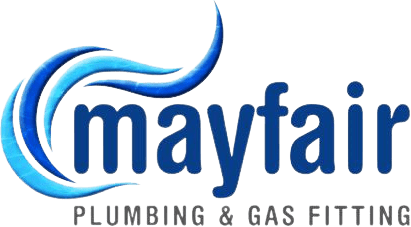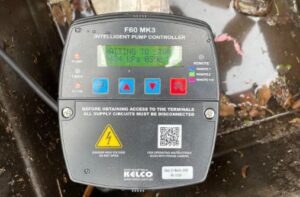The Clean Energy Council strongly believes renewable hydrogen should be Australia’s go-to energy source. Not only is it environmentally friendly, but it also does not produce carbon emissions like natural gas, and other fossil fuels do.
The Technology Investment Roadmap shows that the demand for hydrogen exported from Australia annually could reach 3 million tonnes by 2040, generating up to $10 billion in revenue annually.
Australia is world-renowned for its abundance of natural resources, including coal and natural gas. In fact, the country is one of the world’s leading exporters of these fossil fuels. However, with an increasing focus on renewable energy sources in recent years, the Australian government has been looking for ways to reduce its reliance on these traditional forms of energy.
With energy prices set to rise by 50% in 2023 and beyond, it is important that we find alternative and more sustainable sources of energy. Hydrogen fuel is one such alternative that could help power Australia’s future.
One way they’re looking to do this is by converting natural gas to hydrogen. Hydrogen is a clean-burning fuel that can be used to generate electricity with near-zero emissions. And because Australia has an abundance of natural gas, it’s well-positioned to become a leading producer of hydrogen fuel.
Understanding hydrogen energy?
Hydrogen is the most abundant chemical element in the universe. It can exist as a gas or liquid, and can be processed to be used for various purposes such as fuel for transportation or heating, storing electricity, or manufacturing industrial products.
It is often called the perfect energy carrier because it has a lot of advantages over other forms of energy. Hydrogen is very light, so it takes very little energy to move it around. And it can be stored easily, so it’s perfect for fuel cells and batteries. Hydrogen can store renewable energy for use later on, making it a helpful way to produce sustainable energy.
Hydrogen as a fuel
Hydrogen is an alternative fuel because of its non-polluting properties when used in electric vehicles, as well as the domestic production potential and high-efficiency levels of fuel cells. A fuel cell linked with an electric motor has two to three times more efficient than a gasoline-powered internal combustion engine. Hydrogen can also be used as fuel for internal combustion engines; 2.2 pounds (1 kilogram) of hydrogen gas contains almost the same amount of energy 1 gallon (6.2 pounds, 2.8 kilograms) of gasoline does).
Hydrogen in Australia, Outlook; Funding & Projects.
The Australian Government has placed hydrogen as a top priority in its Technology Investment Roadmap, intending to optimize hydrogen production. This will see green hydrogen being produced for less than $2 per kilogram (not including the cost of storage and transportation). If achieved, this would make hydrogen price-competitive with fossil-fuel-based options.
State and territory governments are collaborating to establish the necessary policy and regulatory framework to enable a hydrogen industry in Australia. This includes investing in projects, like the Tallawarra B power project which received A$83 million from both New South Wales Government and Australian Federal Government.
Initiatives & projects by the Australian government that seek to develop a hydrogen industry in Australia include:
The Australian Renewable Energy Agency
In 2021, the Australian Renewable Energy Agency (ARENA) set up a $70 million fund to support multiple large-scale renewable hydrogen projects as part of the country’s effort to shift to cleaner energy. These demonstration projects will provide valuable data and lessons learned to help the renewable energy industry reduce the risk and costs associated with renewable hydrogen production, thus making it more commercially viable.
Clean Energy Finance Corporation
In addition, the Australian government set aside $300 million of Clean Energy Finance Corporation funding to provide cheaper financing options for those looking to get involved in Australia’s new clean hydrogen industry.

More Funding For The Hydrogen Industry In 2022
The federal budget for October 2022-23 includes planned investments in regional hydrogen development hubs. This includes funding awards made under the initial grant programs relating to hydrogen hub development.
They plan to invest up to AUD$526 million in regional hydrogen hubs across Australia. These investments will help support the rollout and development of these hubs across different territory governments, making it easier for people to access clean energy.
Hydrogen Energy Australia; FAQs
Why is Australia investing in hydrogen?
With an abundance of renewable energy sources, large fossil fuel resources, and geological CO2 storage, Australia has the potential to become a significant producer of hydrogen for domestic use and export.
Does green hydrogen have a future?
Green hydrogen definitely has the potential to become a significant part of Australia’s future energy plans. It can be used to create a “net zero-emissions” fuel that can be used in different application including maritime shipping and aviation; high-heat industrial processes where electrification is not possible, such as in steel and cement production
Are there any hydrogen plants in Australia?
There are several hydrogen-related projects in Australia, both operational and under construction. However, the $87 Million Yuri project will be the first large-scale hydrogen plant to be built in the Pilbara region. The project has already received $47.5 million in funding to build a 10 MW electrolyser that will be able to produce 4.5T of hydrogen per day, and 18 MW of solar PV in Karratha, WA.
Adapting to hydrogen in Adelaide as a licensed gasfitter
Ove the last year I have personally been involved with answering questions to surveys surrounding the future of hydrogen gas in Australia and how I feel about it as a licensed class A gas fitter. Personally I think it is a great idea as the cost of living keeps getting higher and higher and the predicted future of electricity costs is expected to increase by up to 50% over the next two years.
I believe there will need be some adjustments to appliances such as hot water services, ovens, cook tops, fire places and ducted room heating in order for them to operate on hydrogen gas but for the near future I understand that the gas being delivered will only be a blended formula with a complete roll out of 100% hydrogen gas not expected until 2030 onwards at this stage.
Will the government offer incentives and training for gas fitters to convert existing appliances? My thoughts are most likely yes. I hope that more public awareness comes about the use of hydrogen gas before electricity becomes a dominant fuel source in most homes across Australia and the public are locked into expensive contracts costing them more then it would have if they had just stayed on gas!




